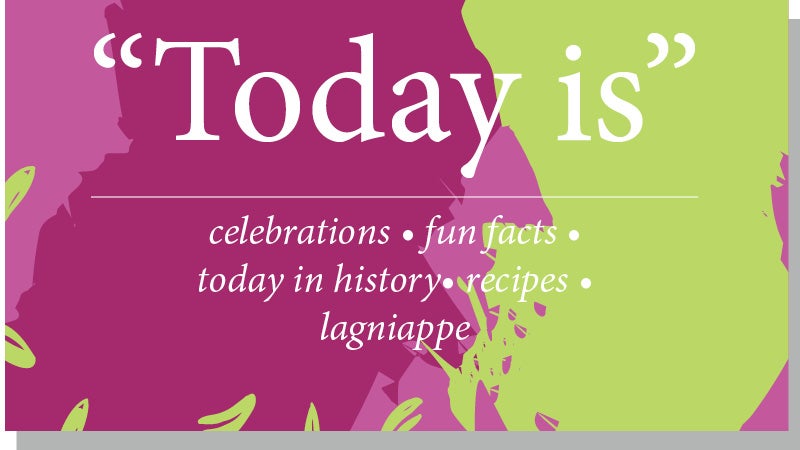Today is June 4
Published 8:00 am Friday, June 4, 2021
|
Getting your Trinity Audio player ready...
|
Nighttime snacking best bets
Calorie-conscious individuals may wonder if eating at night or after a certain time can derail their diets and fitness regimens. The jury is still out on whether eating at night can pack on the pounds or not, with various health recommendations contradicting one another. However, if one does choose to snack at night, there may be a smart way to do so.
The U.S. Department of Agriculture’s Weight Control Information Network says that a calorie is a calorie no matter when it is consumed. That means it doesn’t matter if calories are consumed in the morning, afternoon or evening. It is how many are consumed and the amount of physical activity individuals perform that will affect their weights. Conversely, the Academy of Nutrition and Dietetics says they’re not sure if a calorie is a calorie no matter when it is consumed. Their research and data from the University of Pennsylvania School of Medicine’s Center for Weight and Eating Disorders indicates that when food is consumed late at night the body is more likely to store those calories as fat and gain weight rather than burn it off as energy. Certain animal studies show that food is processed differently depending on the time of day it was consumed.
But what is a person to do when hunger pangs hit at night and one fears that their rumbling stomach may interrupt their sleep? According to the nutrition and fitness experts at MyFitnessPal, powered by Under Armour, stick to a snack that is between 100 and 200 calories. Choose a food that is high in protein, fiber or healthy fats, which will be more likely to keep a person satiated throughout the night. Apples and peanut butter, string cheese and fruit, or whole grain crackers and Greek yogurt can be healthy, satisfying nighttime snacks. Avoid sugary, calorie-dense foods, which may be hard to digest and can compromise sleep quality.
More studies may be necessary to determine the relationship between body weight and snacking at night. In the meantime, nighttime snackers should choose healthy foods when reaching for a late night bite to eat.
**
National Donut Day
How doughnuts became so famous
Doughnuts are beloved breakfast staples. A glazed doughnut to go with morning coffee on the way to work is a morning ritual for many people.
Despite their popularity, many people do not know much about how doughnuts came to be.
Oily cakes precede doughnuts
The origin of doughnuts is widely debated. Desserts made from fried dough can be found in various countries and cultures. However, historians largely believe that the Americanized doughnut arrived thanks to Dutch immigrants. According to Smithsonian magazine, when Dutch settlers came to New York, they brought along olykoeks, translated to “oily cakes.” Records show the Dutch were making these creations as early as the mid-nineteenth century. These earliest doughnuts were balls of cake fried in pork fat until they were golden brown. Since the center of these doughnuts did not cook as fast as the outside, many also were stuffed with fillings that did not need to be cooked.
Literally minded name
In a similar fashion, Elizabeth Gregory, a New England ship captain’s mother, used her son’s spice cargo along with lemon rind to fashion her own fried dough. Gregory made these pastries so that her son, Hanson, and his crew could store them on long voyages, and eat something that would ward off scurvy and colds. Gregory stuffed walnuts or hazelnuts in the centers of the dough. She came to call the pastries “doughnuts.” However, others attribute the name to the original olykoeks, which were sometimes shaped into knots and called “dough knots.”
Seaworthy improvements
While the doughnuts certainly were acceptable, Captain Gregory came up with a way to improve his mother’s concoction. Rather than stuff the doughnut to make up for the uncooked center, he punched a hole in the middle of the dough ball before it was fried. The hole increased the surface area and exposure to the hot oil, ensuring the entire doughnut cooked evenly. Other stories about the doughnut hole attributed the modification to the fact that Captain Gregory could then hang the doughnut on the ship’s steering wheel so he could use both hands to steer.
Doughnuts get automated
Prior to 1920, doughnuts were made entirely by hand. Adolph Levitt, a Russian refugee and baker, began selling doughnuts from his bakery in New York City’s theater district. To keep up with the crowds, Levitt invented a gadget that could make the fried rings faster. A circle of dough shaped like a ring dropped into a vat of boiling oil, circulated, was flipped over, and emerged from the oil on a moving ramp. Many modern doughnut companies still make their doughnuts like this.
Modernization and mass production brought a shortening of the name “doughnut.” Various doughnut companies use “donut” for the cakes. Whether you call them dough knots, doughnuts or donuts, the treats are delectable.






